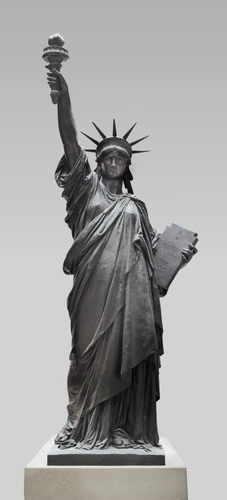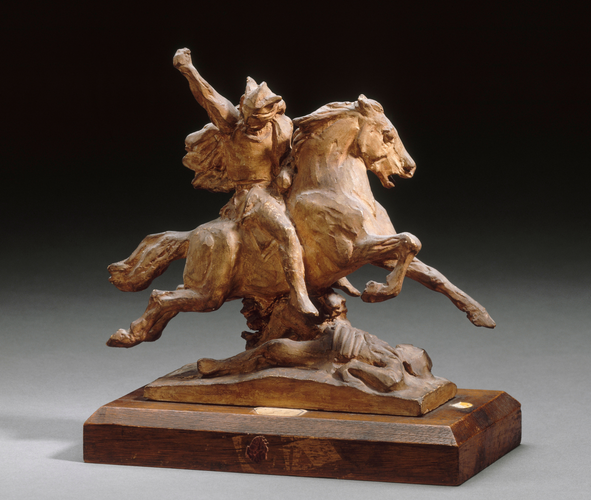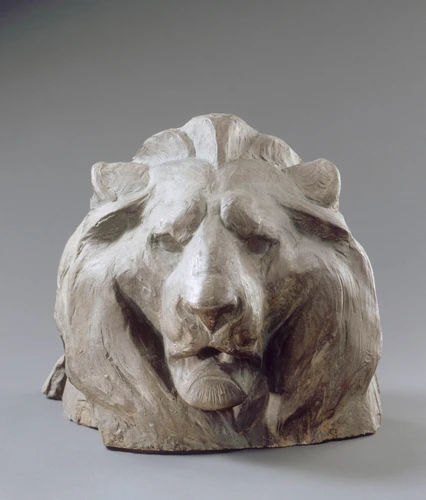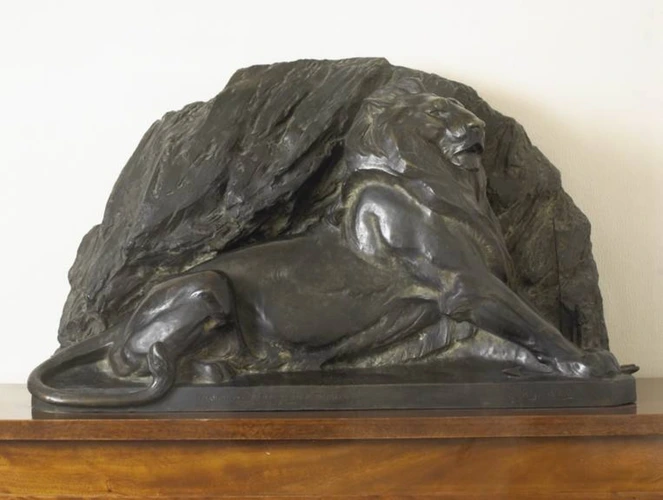Le Bon Samaritain
Small works of this kind are rare in Bartholdi's work as he preferred colossal sculptures, and was mainly famous for his Statue of Liberty, given to the United States by France in 1886. But this Good Samaritan is a work he produced in his youth – the sculptor was only 19 when he created it. It is, moreover, the first work he exhibited at the Salon, in 1853.
This bronze illustrates a parable from the New Testament, in which Christ preaches charity towards one's neighbour: a traveller is beaten and robbed by bandits who leave him for dead on the road. A priest and a Levite pass by without stopping. Only a Samaritan, a people the Jews regarded as ungodly, came to help him. The composition owes much to painting. Bartholdi here shows himself to be a worthy pupil of Ary Scheffer, who helped renew religious painting by taking it towards a more refined and concise style. At the same time, this small group has an orientalist flavour. The Good Samaritan is dressed in a burnous like a desert nomad. Two years later Bartholdi realised his dream to travel through the Orient, accompanied by the painter and sculptor Jean-Léon Gérôme.





